#noir 2001
Text
something i love about the girls with guns genre of anime is you know the main characters are gonna be ok if they're up against a man with decades of experience in combat but if they end up fighting another high school girl then they're in trouble. like adult men are the red shirts of the genre
590 notes
·
View notes
Text

I <3 yuri subtext
#noir#noir 2001#noir anime#mireille bouquet#kirika yuumura#2000s anime#yuri#wlw#illustration#my art#toxic yuri WOOOOOOO#we all cheered
196 notes
·
View notes
Text

finished watching Noir (2001 anime) and this is what i believe kiri and miri are up to after the finale
#sundoodle#noir#noir anime#noir 2001#mireille bouquet#kirika yuumura#digital#comic#silly#mireille x kirika#kinda ish idk i dont rlly ship them but they do be partners
53 notes
·
View notes
Text
We must never forgive the people who took anime about a pair of women who shoot people with guns away from us
25 notes
·
View notes
Text
Five underappreciated anime that I would recommend!
1. Canaan (2009)
This is, from what I understand, an adaptation of a side-story chapter for the visual novel series 428: Shibuya Scramble, guest-written by Nasu Kinoko and guest-illustrated by Takeuchi Takashi. That is to say, the Type-Moon guys — the creators of Tsukihime, Kara no Kyoukai, and the now-legendary Fate/Stay Night. However, Canaan doesn’t take place in the Type-Moon shared universe(s), since it’s for another company’s property.
That being said, the anime adaptation is quite comprehensible on its own terms, likely due to the adaptation being written by the prolific and highly skilled screenwriter Okada Mari (Hanasaku Iroha, O Maidens In Your Savage Season, Mobile Suit Gundam: Iron-Blooded Orphans, Maquia). Her writing imbues the narrative with enough emotional intensity to make up for the occasionally-convoluted nature of the plot, and the backstories of the characters are hinted at just enough so that the viewer can understand their relevance, without taking up too much precious screen time. It can be a little hard to follow at points, but I ended up understanding it decently well anyway.
The production values are very high indeed, due to the anime being produced by P.A. Works, and directed by Andoh Masahiro (Sword of the Stranger, Hanasaku Iroha, O Maidens In Your Savage Season). The action animation is consistently stunning, the characters are beautifully expressive, and the overall look of the show is fantastic.
And the voice acting is an absolute treat, with the lead role of Canaan herself taken by Sawashiro Miyuki, the antagonist role of Alphard taken by Sakamoto Maaya, and Nanjou Yoshino in the role of Oosawa Maria, the POV character for a lot of the story. The supporting voice cast is packed with talent too — Hamada Kenji, Tanaka Rie, Nakata Jouji, Tomatsu Haruka, Hirata Hiroaki, Noto Mamiko, and even Ootsuka Akio in a minor role!
The premise is sort of a science fiction type of thing, but set in the (quasi-)contemporary location of 2000s China, where outside of the sci-fi conceit, the setting is largely realistic. The tone and mood is mostly that of an action thriller, with some nail-biting suspense here and there, but there are some beautifully soft and tender moments as well — often involving Canaan and Maria. Yes, folks, this has yuri in it, although it’s (strongly) subtextual.
Anyway, I would recommend this to people who love Ghost in the Shell: Stand Alone Complex, Kara no Kyoukai, Fate/Zero, and probably also Cowboy Bebop.
2. Tetsuwan Birdy OVAs (1996)
This is distinct from the later adaptation of the original Tetsuwan Birdy (Birdy the Mighty) manga, called Tetsuwan Birdy Decode, which came out in the late 2000s — this one came out in 1996 and was produced by Studio Madhouse in their prime.
The main characters are Senkawa Tsutomu (voiced by Iwanaga Tetsuya), a hapless teenager who gets accidentally killed(!) by an alien spaceship on his way to school one day, and Birdy Cephon Altirra (voiced by Mitsuishi Kotono), a human-looking alien and an intergalactic government agent who saves Tsutomu by merging her body with his. Effectively, they become two people in one body, which can shift between the forms of Birdy and Tsutomu…. except Birdy still needs to deal with all the rogue aliens who threaten the safety of the galaxy, while Tsutomu needs to study for his high school entrance exams. From what I’ve been told, the premise is fairly reminiscent of Ultraman and other classic tokusatsu series.
It’s four tight episodes of classic ‘90s OVA goodness, with a fun and slightly silly sci-fi concept that is nonetheless wrung for some surprisingly effective drama at times. The main thrust of it, though, is action comedy — and it definitely delivers on that front. The fight scenes are superbly animated, including some early-career work from now-legendary animator Suzuki Norimitsu, and the character designs by Takahashi Kumiko (Witch Hunter Robin, Snow White with the Red Hair, Cardcaptor Sakura) are amazingly expressive. Birdy’s striking asymmetrical design is a particular favourite of mine. The direction by Kawajiri Yoshiaki (Cyber City Oedo 808, Ninja Scroll, Vampire Hunter D) is solid, and the writing is quite serviceable despite the brevity and premise.
Overall, I wouldn’t say it’s much of an intellectual watch, but if you just want a fun action-comedy ride with an extremely charismatic female protagonist and stunning animation quality, Tetsuwan Birdy is likely to be your jam. I’d recommend it to people who enjoy classic tokusatsu series, the original ‘90s Sailor Moon anime, and the less-depressing parts of Neon Genesis Evangelion.
3. Noir (2001)
This anime series is perhaps not as underappreciated as the others on this list, but I do still feel that not enough people have seen it. It was made by the studio Bee Train, and it’s the first entry in their so-called “Girls with Guns” trilogy (which isn’t actually a coherent trilogy, since they’re three different stories). The series was made right at the end of the cel-anime era, before the transition to digital colouring and compositing, so the masters were shot on film, but it was also made at the beginning of the slow transition to widescreen TV broadcasts, so it’s one of the very rare cel anime that’s in 16:9. This allows for a beautifully detailed look that, IMO, serves to offset the occasionally-limited animation and the frequent re-use of footage.
The premise is basically “secret assassins in France are caught up in weird intrigue and conspiracies”; as such, there’s a lot of very fun gunplay and kickass fight scenes, but also a lot of suspense and mystery. The writing is a little bit slipshod at times, but it ends up holding together, and the characters and (especially) the fantastically moody vibe make the show worth watching.
The characters are imbued with a lot of life and colour, both by their extremely attractive designs and by their voice actors’ wonderful performances. Mireille Bouquet, a young Corsican assassin and one of the two protagonists, is voiced by Mitsuishi Kotono; Yuumura Kirika, the other main protagonist who is a Japanese schoolgirl who has seemingly lost all her memories (but not her exceptional assassin skills), is voiced by Kuwashima Houko; and the mysterious Chloe, who shows up partway through the show, is voiced by Hisakawa Aya. There are definite yuri vibes between Mireille and Kirika, but as with Canaan, it’s all subtextual.
The main draw of the show, though, is its phenomenal soundtrack, courtesy of Kajiura Yuki (.hack//Sign, Kara no Kyoukai, Fate/Zero, Sword Art Online, Demon Slayer) in her very first anime scoring gig. It’s at times propulsive, at times dark and moody, at times beautifully serene, at times melancholy and nostalgic — and it’s utterly memorable.
I would recommend Noir to anyone who likes Canaan, Witch Hunter Robin, Ghost in the Shell, or anyone who just wishes that James Bond were a woman.
4. Flip Flappers (2016)
This anime was produced at Studio 3Hz and directed by Oshiyama Kiyotaka, in a dazzling yet underappreciated directorial debut that was presaged by his impressive animation work on Dennou Coil, Space Dandy, A Letter to Momo, The Secret World of Arietty, and The Wind Rises. Owing to this extremely solid animation background, Oshiyama was able to recruit a lot of prime animation talent for Flip Flappers, and it definitely shows in the stunning sakuga of the wild action sequences that pepper the show’s narrative.
While the fantastic animation is a key draw of this show, the sheer creativity in the worldbuilding, conceptual, and visual design spheres also contribute to its inimitably psychedelic look and feel. The landscapes of the worlds contained in Pure Illusion — the dream-realm that the protagonists enter each episode at the behest of a mysterious scientific organisation — and of the “real” world are whimsical, storybook-like, and slightly “off” in a slightly unsettling but compelling way.
The dreamlike atmosphere pervades the narrative as well — very little about the mechanics of the world is specified out loud, relying heavily on symbolism and visual storytelling to do the heavy lifting for the audience’s understanding. This might be a turn-off for audiences who prefer to have things spelled out for them clearly, but the point of this story is not always to make perfect logical sense, but rather to work on an emotional and metaphorical level. And work, it certainly does.
The episodic structure involving the various worlds of Pure Illusion explores the concept of the Umwelt (the individual sensory “world” of a person or organism), as well as some Jungian concepts and archetypes, in order to express the strange and sometimes-scary developmental stage of adolescence. The characters of Cocona (voiced by Takahashi Minami) and Papika (voiced by Ichimichi Mao) undergo a metaphorical and literal puberty, a coming-of-age similar in some ways to that experienced by the protagonist of FLCL, but with significantly more yuri. In fact, this show has the most outright yuri of any of the anime on this list. But that isn’t very strange for what is essentially a psychedelic magical-girl show: lots of magical-girl anime seem to include homoerotic vibes in some form or another, from Sailor Moon to Nanoha to Madoka.
There are some minor flaws in the storytelling towards the end, IMO, but overall it’s a wonderfully impactful emotional journey to watch Flip Flappers. Plus, the OP and ED are both extraordinarily catchy tunes that I’ve found myself humming on many an occasion.
I’d recommend this anime to anyone who loves weird magical-girl stuff, weird yuri, and/or amazing action animation.
5. Claymore (2007)
An adaptation of the manga by Yagi Norihiro, this anime is considered by many to simply be “basic”, or at least simply “inferior to the manga”. Now. I haven’t read the original Claymore manga (yet! I plan to eventually), but I found this anime to be compelling nonetheless. And if it really is the case that the manga is better, then I definitely look forward to diving in.
Having been produced by Studio Madhouse in the mid-2000s, it’s unsurprising that the vast majority of this anime was outsourced to Korean animation studio DR Movie, a longtime powerhouse subcontractor for both Japanese and American animation alike. That said, the direction of Tanaka Hiroyuki (director of a portion of Hellsing Ultimate and frequent close collaborator of Attack on Titan director Araki Tetsurou) remains sharp, compensating for the sometimes-limited animation with good storyboarding and a strong sense of mood and atmosphere.
Another aspect of Claymore which helps make up for the occasional visual shortcomings is the soundtrack by Takumi Masanori. The compositions are a mix of harder rock and electronic elements with a strong orchestral backbone, as befits a dark-fantasy setting and mood — the faster pieces are edgy and propulsive, very appropriate for the bloody action scenes, and the calmer pieces have a melancholic beauty to them that sticks in one’s memory. I wish the soundtrack were on Spotify, but alas, it is not.
The other sonic element that helps this anime out immensely is its absolutely STACKED voice cast. The main character, Clare, is voiced by Kuwashima Houko, in a fantastic yet understated performance. The other main character, Raki, is voiced by the less-well-known Takagi Motoki, but nearly all the other roles — including many bit parts — are filled with industry legends. Teresa is voiced by Park Romi, Miria is voiced by Inoue Kikuko, Irene is voiced by Takayama Minami, Rubel is voiced by Hirata Hiroaki, Priscilla is voiced by Hisakawa Aya, Ophelia is voiced by Shinohara Emi, and Jean (whom I cannot help but ship with Clare: there’s so much homoerotic tension there!) is voiced by none other than Mitsuishi Kotono. Yes, they got three of the original Sailor Senshi VAs — and I don’t know why that’s funny to me, but it is. And all of the voice actors deliver killer performances.
The premise of the show, before I completely forget to explain it, is that of a dark fantasy world where demons called youma ravage human settlements, with only the titular Claymores to protect humanity. They are a guild of platinum-haired and silver-eyed warrior women who possess superhuman fighting abilities, due to the fact that they’ve been fused with youma essence, and wield the massive broadswords that give them their name. Basically, (s)he who fights monsters must become (partly) a monster to do so.
I’ve heard the vibe of Claymore compared to manga like Berserk, and I don’t know how true that is (not having read the latter for myself), but there’s certainly a lot of bleakness and monstrosity in this fantasy tale. However, the Claymore manga was published in none other than Weekly Shounen Jump, so it’s perhaps unsurprising that the story remains resolutely forward-looking, the protagonists’ arcs focussing on the power of grit, determination, true friendship and loyalty, and protection of the weak and downtrodden. It’s never cynical or sarcastic — always straightforward and sincere despite the frequent darkness of the story.
The writing is consistently solid, even through the controversial anime-original ending (the manga continues long past the point where the anime cut things off), so I’m not sure who to point to for that: Yagi Norihiro for writing the original material, or Kobayashi Yuuko (JoJo’s Bizarre Adventure, Attack on Titan s1-3, Kakegurui, Casshern Sins) for adapting it cleanly for the screen? Either way, it made me want to read the manga to experience more of these compelling characters and their travails.
I would recommend this anime to those who enjoy Kill La Kill or RWBY, or just to those who enjoy powerful women hacking at monsters with massive weapons and making lots of blood spray out.
#anime recommendation#anime recs#flip flappers#tetsuwan birdy#birdy the mighty#claymore#noir#noir 2001#canaan#long post#personal#anime
101 notes
·
View notes
Text
No one will ever do "episodic side character" like Silvana Greone. She has the most deranged "moral" code ever known to humankind. She's somehow an incredibly gracious loser despite being one of the most cruel and notorious killers in a show about horrible murderous people. She instigates the absolute WORST toxic lesbian connection you can think of, one so awful that she has been the other woman's one (1) fear since childhood, a woman who LOST HER FAMILY AND NEVER KNEW WHY. AND THIS LADY WAS STILL HER GREATEST FEAR. Her idea of...flirting? Romantic obsession? Is thoroughly traumatizing someone so deeply that it affects their ability to do their job like a decade later, and finding that experience somehow so meaningful or enjoyable that she never forgot about it. And stayed obsessed with that girl she met briefly as a child. She insists on using a knife as a weapon in a world where guns exist and that somehow manages to be enough to keep her alive for years.
SHE SAYS, "REVENGE IS THE GREATEST ACT OF FORGIVENESS."
20 notes
·
View notes
Text
The ultimate showdown of GWG trilogy characters!
Hello, hello, hello everyone and welcome to the GWG Trilogy Character Poll! Here we will see once and for all which one of our beloved characters from Noir, Madlax and El Cazador De La Bruja is the most beloved by the masses! And by masses I mean the 6 tumblr uses who have seen all of the shows listed above. Submission form will be down below!
Rules:
1. You can submit multiple different characters from the trilogy! Nobody is included by default since I want your propaganda and rambles, so make sure to submit all of your favorites!
2. Be chill about it, okay? It's just a tumblr poll and anyone harassing others is getting instablocked.
3. Have fun!
Oh, also, alternatively, you can submit characters through asks, I'd just prefer using the submission form
#noir 2001#madlax#el cazador de la bruja#noir anime#gwg trilogy#mireille bouquet#kirika yuumura#margaret burton#ellinad
73 notes
·
View notes
Text


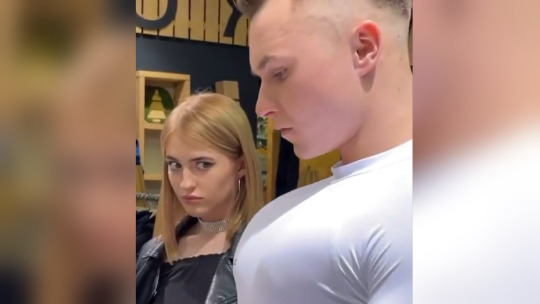

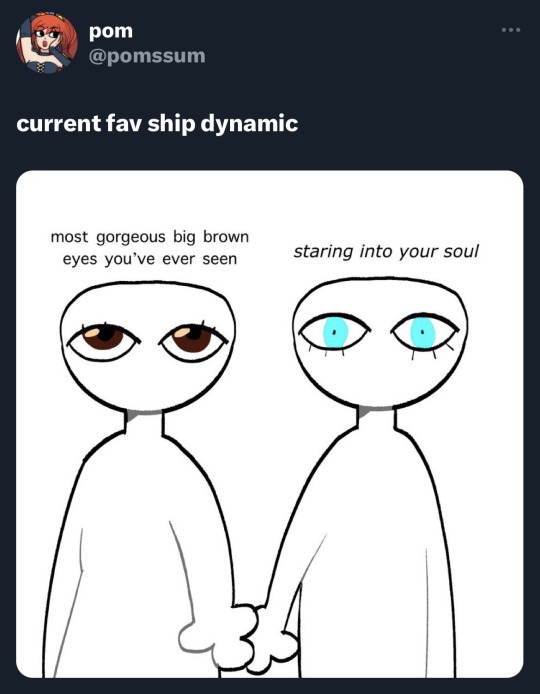
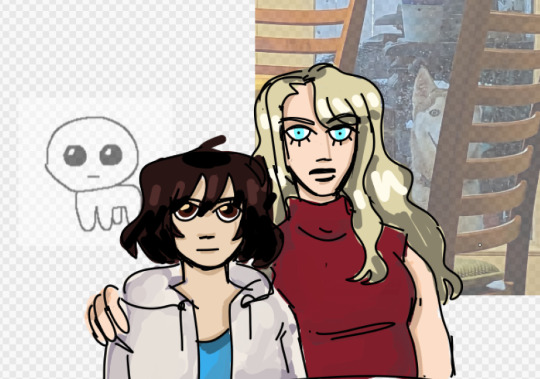
some mirekiris from the past few months
the dog image in the last drawing is from this post
and some bonus kirikas under the cut
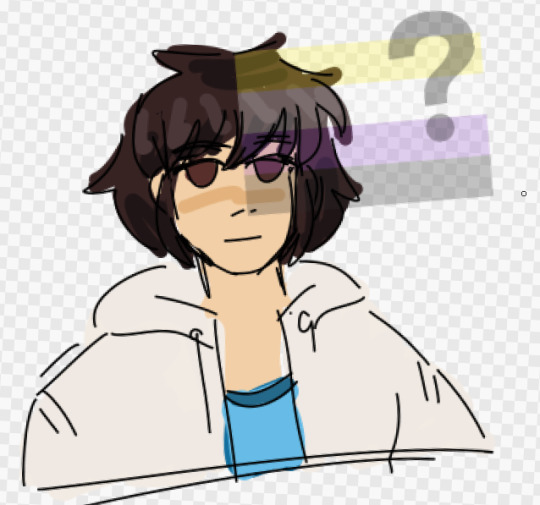

#noir#noir anime#noir 2001#mirielle bouquet#kirika yuumura#mirikiri#mirekiri#my art#image id in alt text#srry these are all memes
43 notes
·
View notes
Text
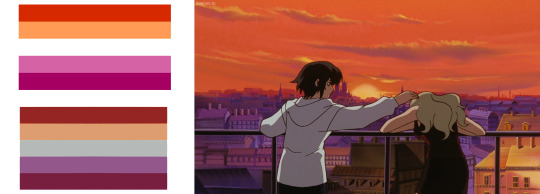


The lesbian flag but I colourpicked it from this screenshot of Noir (2001)
#noir#noir 2001#noir anime#mirekiri#mirikiri#kirika x mireille#kirika yuumura#mireille bouquet#it looks like a more depressed version tbh canon#i remember yelping in agone when kirika retracted her hand
97 notes
·
View notes
Text
those four magical words every girl wants to hear
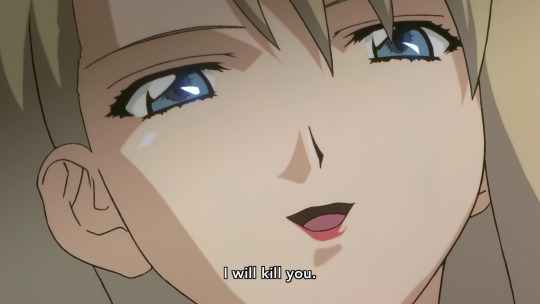
186 notes
·
View notes
Text
theres two beds

with plenty of room
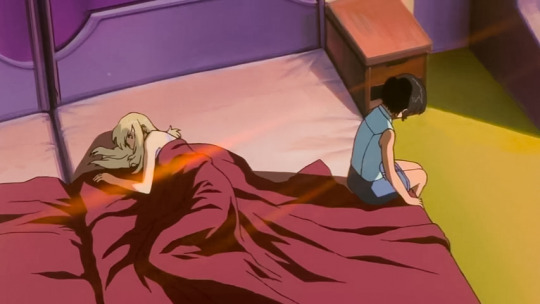
and yet

#i too sleep this close to people i claim not to care about#and have promised to kill#ig theyre used to that since they live together#and share a bed at home#but if youre not together why are you sharing a bed#when you have the chance to spread out hmm 🤔#noir anime#noir 2001#kirika yumura#kirika yuumura#mireille bouquet#kirika x mireille#mirekiri
164 notes
·
View notes
Text
Noir 2001 Ep. 1-10 Thoughts

I really love her France Shirt dhshbd
I figured stopping at Chloe's introduction would be the best idea. From what I know this should be when the main plot picks up.
First, the bad:
The first episode was really jarring to watch. The cuts were awkward, the music was too loud at parts and certain scenes dragged out for too long. Maybe this is just me, but I didn't realize the music was coming from the watch until the end of the episode, which made things really confusing.
From then onwards isn't like this. Maybe I just got used to it, but the cuts didn't feel jarring and the flow between scenes was smooth enough.
There is a lot of reused animation, which is fine for the most part. It's not as elegant about it as shows like Utena but it's not a big deal.
What annoys me is sometimes the plot will screech to a halt to show you a falshback you have already seen before. Personally, I'm fine if a conversation is just one still frame or made of reused animation. The flashbacks and the occasional training is clearly there for budget reasons and nothing else. That's why it takes me out of the story sometimes.
Kirika and Mireille don't have much going on. They are pretty bland which makes it hard to care for them. The "I will kill you when this is over." thing is the most interesting bit. There is still plenty of time to develop them so I'm not that bothered about it.
The show feels rather empty at times, if that's the word. It feels like onthing is happening. For example: the information we get about the main mystery is not enough to make any conclusions or draw connections, so whenever a new development happens I can only think "Oh, we learned this now". We don't learn anything about what our protagonists are like either. The quiet moments are great for that, but I still feel like I know nothing about them.
I don't mind the censorship but it can be really funny sometimes. Kirika will get hit but her arm will look completely fine, making it impossible to tell how bad she was hurt until she reacts.
When I started episode 7 I genuinely though I skipped an episode. They don't make it even slightly obvious that a time skip happened.
This one is really stupid: I can't seperate Mireille from Misato in my mind. I'm sure Noir fans are annoyed by the comparison by this point but I'm really trying guys (ノД`)
Okay,, we can get to the good stuff now:
The atmosphere is great. The backgeound art is lovely and complements the animation well. They definitely achieved the aesthetic they were going for.
The soundtrack is pretty nice. Again, adds to the atmosphere.
Kirika especially can be super clever, making the fights fun to watch (only about 50% of the time though)
The composition of the shots draw your eye to the focus well. It's a good way to make shots interesting with a small budget.
It's fantastically homosexual, while also not being about romance at all. All the notable characters are women. That might add to the yuri vibes I guess.
I liked Silvana. She is one of the few side characters that have anything going on. Her relationship to Mireille is intriguing to me, they have met only once. But it's clear their one interaction has left a big inpression on not only Mireille but also her, especially since they were kids at the time. Her pulling out a knife and cutting the crown off of Mireille when she says she is scared tells us everything we need to know about her.
There is also something to be said about the crowns. Mireille's innocence being destroyed by Silvana. It's important to Silvana that she has control, removing the crown she gave to Mireille is a way fot her to feel superior, I guess. Even at a small age.
Mireille is still scared in their final confrontation, but she fights anyway.
I am very interested in Chloe because clearly, the two maidens who gover death are suppose to be Kirika and Mireille. However, she is insist she is Noir. I imagine things will go south when she realises that's not the case. (I doubt it's the case). The woman we see is most likely using her and Chloe is dependent on her validation. That's what I am guessing.
7 notes
·
View notes
Text
meta i want to write but probably won't:
chloe is very clearly meant to be the dark parallel to kirika (most evident when we see kirika in true noir mode), but altena is meant to be the dark parallel to mireille.
(and altena's relationship with chloe is meant as a warped sort of parallel to mireille's relationship with kirika. altena pretends to love chloe, but if her hate can save quote is correct, she never truly loved her and only used her as a means to an end. mireille, from the beginning, intentionally said she was using kirika as a means to an end and pretended to hate her, but ended up truly loving her.)
...i could be so much more specific in meta but idk if i actually want to. write that essay.
#musings#noir 2001#noir anime#noir#noir anime 2001#mireille bouquet#kirika yuumura#yuumura kirika#LOOK I HAVE THOUGHTS ABOUT THIS ACTUALLY#LIKE I WAS SEEING IT AGAIN WITH MY DAD#because he hadn't seen it and it's my actual favorite anime and we were looking for something new to see don't judge me#AND WAS LIKE AH#I SEE#ALTENA IS A PARALLEL TO MIREILLE#THEY ARE BOTH OBSESSED WITH REVENGE#AFTER THEIR VERY TRAUMATIC CHILDHOOD#AND WILL DO A LOT OF THINGS TO GET IT#so like#it's only now that i'm like 'oh wait actually the altena-chloe relationship is just a parallel to the mireille-kirika relationship'#like i have a lot of thoughts now i'm sorry
22 notes
·
View notes
Photo

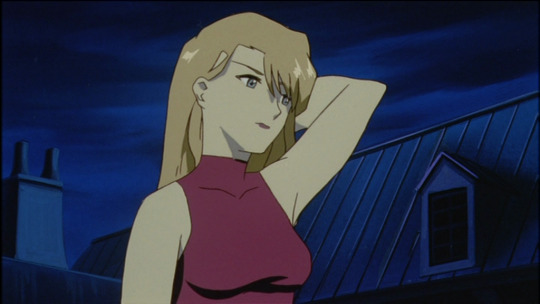
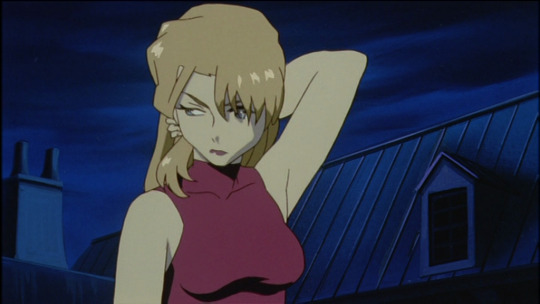
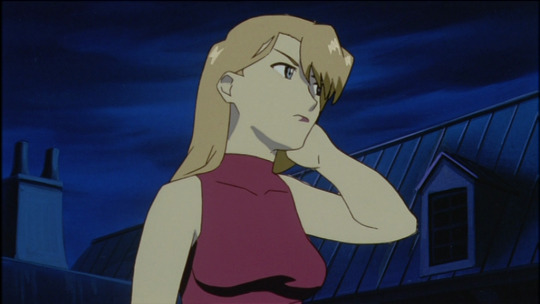


hello to whoever drew Mireille here
#sorry this shot was just....disticnly different from the usual?#anyway small action like that during a chase shootout? sure#noir#noir 2001
58 notes
·
View notes

